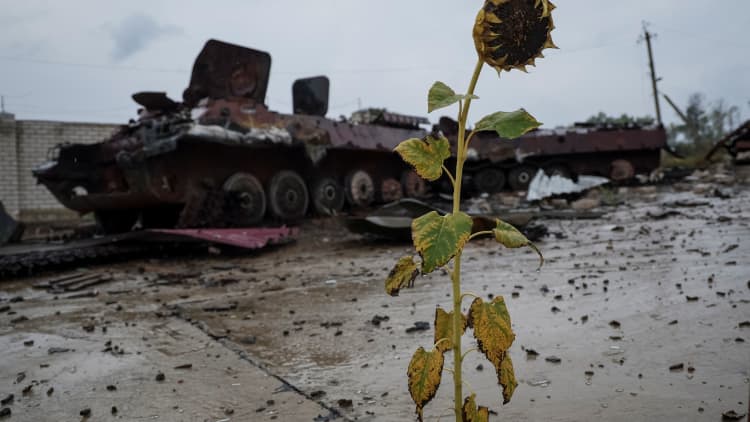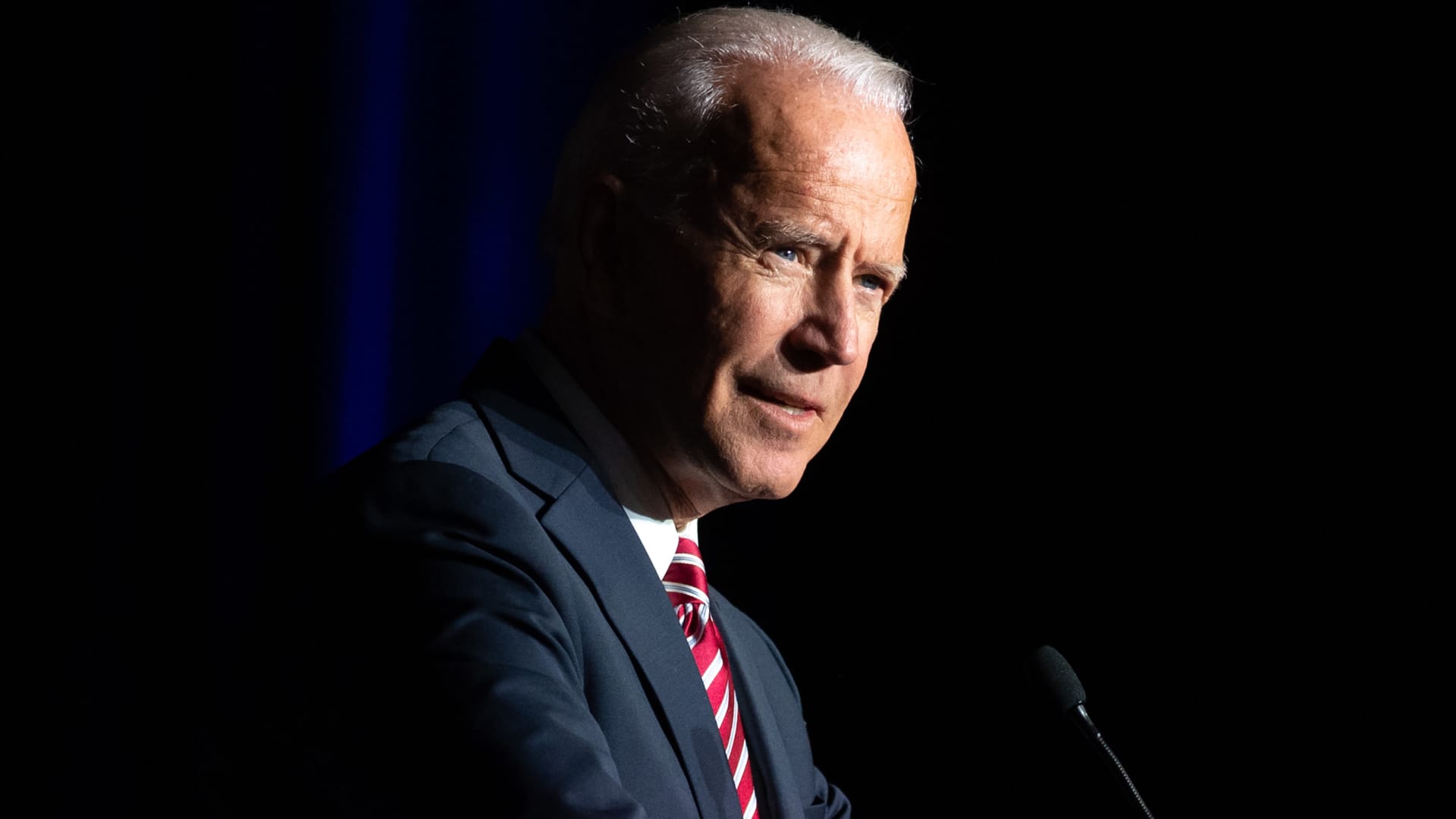President Joe Biden speaks during the First State Democratic Dinner in Dover, Delaware.
Saul Loeb | AFP | Getty Images
WASHINGTON – The Biden administration announced new economic sanctions on hundreds of Russian officials and entities Friday in response to the Kremlin’s illegal annexation of four regions of Ukraine.
“Make no mistake: these actions have no legitimacy,” President Joe Biden said in a statement slamming Russian President Vladimir Putin’s goal of recreating a Soviet-style Russian empire.
“I urge all members of the international community to reject Russia’s illegal attempts at annexation and to stand with the people of Ukraine for as long as it takes,” he said, vowing that America and its allies would hold the Kremlin accountable.
The new sanctions target several front companies outside of Russia that were created this year to help major Russian military suppliers evade the sanctions they had already faced.
The new designations also expand sanctions on top Kremlin officials to include their wives and adult children. After seven months of war and economic sanctions, these revisions offer a window into what U.S. officials believe is working.
The Treasury Department named 14 international suppliers that assisted Russia’s military supply chains. It also imposed designations on 109 members of Russia’s State Duma and 169 members of the Federation Council of the Federal Assembly of the Russian Federation.
Also new on Friday is the addition of Elvira Sakhipzadovna Nabiullina, Russia’s central bank governor and a former advisor to Putin. Since 2013, she has overseen its efforts to protect the Kremlin from Western sanctions after Russia illegally seized Crimea in 2014, according to the Treasury Department.
The newly sanctioned family members are the relatives of members of Russia’s National Security Council. They include Russian Prime Minister Mikhail Mishustin’s wife and two adult children, along with Defense Minister Sergei Shoigu’s wife and adult children.
Meanwhile, the State Department will impose visa restrictions on Ochur-Suge Mongush, for a gross violation of human rights perpetrated against a Ukrainian prisoner of war and 910 individuals. The department will also impose visa restrictions on members of the Russian military, Belarusian military officials and proxies operating on behalf of the Kremlin.
What’s more, the Department of Commerce is adding 57 entities to its export controls list. It will reiterate that countries that seek to provide material support to Russia and Belarus’ defense sector are subject to penalties.
In announcing the annexations Friday in Moscow, Putin declared that “There are four new regions of Russia,” referring to the Ukrainian regions of Donetsk, Luhansk, Zaporizhzhia and Kherson.
Putin cited sham referendum votes held in Russian-occupied areas, saying voters approved becoming parts of Russia. Those votes are widely viewed by Western officials as rigged and illegitimate.
“The results are known, well known,” Putin said.
Russian President Vladimir Putin gives a speech during a ceremony formally annexing four regions of Ukraine Russian troops occupy, at the Kremlin in Moscow on September 30, 2022.
Gavriil Grigorov | AFP | Getty Images
Earlier this week, the White House said the U.S. would never acknowledge the results of the “sham referendum” and would continue providing Ukraine with military and humanitarian support.
On Wednesday, the Biden administration announced $1.1 billion in additional security assistance for Ukraine. The upcoming aid package, the 22nd such installment, brings U.S. commitment to more than $16.2 billion since Russia’s invasion in late February.
On the heels of Putin’s address, Ukrainian President Volodymyr Zelenskyy said he will submit an “accelerated” application for his country to join the NATO military alliance.
President of Ukraine Volodymyr Zelenskyy visits the Kharkiv region for the first time since Russia started the attacks against his country on February 24, in Kharkiv region, Ukraine on May 29, 2022.(Photo by Ukrainian Presidency/Handout/Anadolu Agency via Getty Images)
Ukrainian Presidency | Anadolu Agency | Getty Images
“We have already made our way to NATO, we have already proven compatibility with alliance standards,” Zelenskyy said on the Telegram messaging app, referring to the technical elements of integrating Ukraine’s military into the 30-member defensive alliance. “We are taking our decisive step by signing Ukraine’s application for accelerated accession to NATO,” he added.
In dramatic remarks before the 77th U.N. General Assembly last week, Zelenskyy called for more arms as his nation carries out an era-defining fight for democratic principles and global order. He specifically asked for long-range weapons, heavy artillery and air defense systems.
Zelenskyy, who has not left his war-weary nation since it was invaded by Russia in February, received nearly a minute of applause and a standing ovation. His speech was delivered shortly after Putin announced plans to conscript hundreds of thousands of Russian men for the war.
Putin’s order for approximately 300,000 Russians to join the fight is the first time since World War II that Moscow has drafted civilians into the military for a war.
The Kremlin’s decision to impose a partial draft was triggered in part by a series of stunning Ukrainian advances in recent weeks.
Equipped with an arsenal of Western weapons, Ukrainian forces have retaken vast swaths of territory that had been occupied by Russian forces since the early days of the war. Their battlefield successes have dented the reputation of the Kremlin’s mighty war machine.
But as Ukraine fights to retake land one village at a time, the cost to civilians has been enormous.
So far, the U.N. estimates that Russia’s invasion has claimed nearly 6,000 civilian lives and led to more than 8,600 injuries. The Office of the U.N. High Commissioner for Human Rights adds that the death toll in Ukraine is likely higher.


